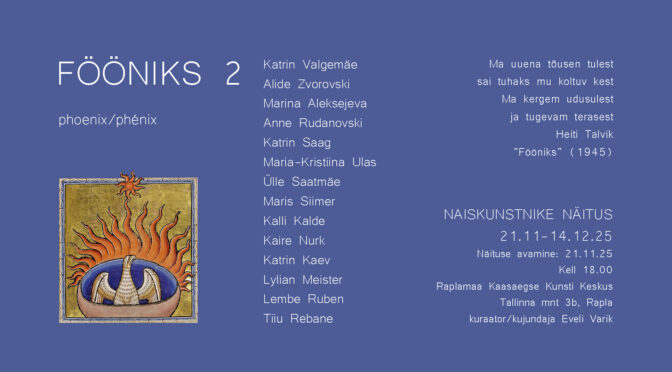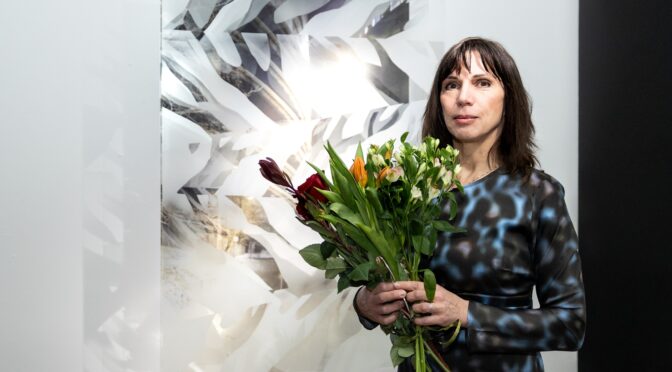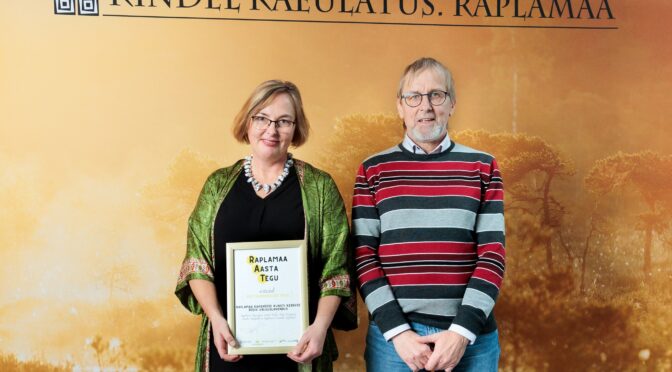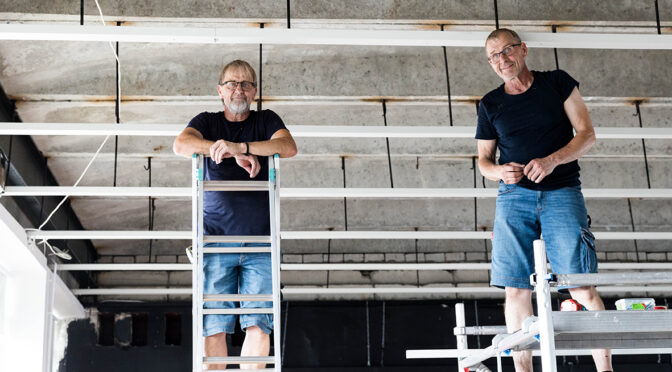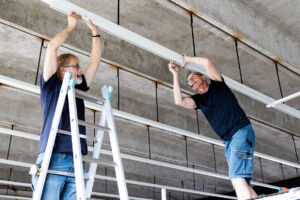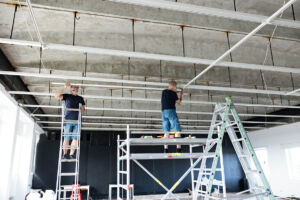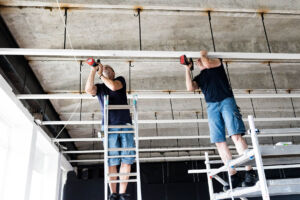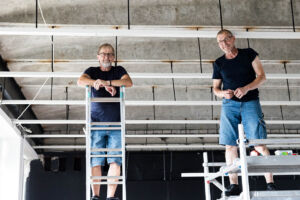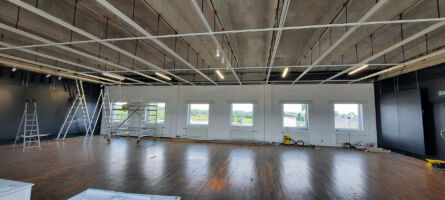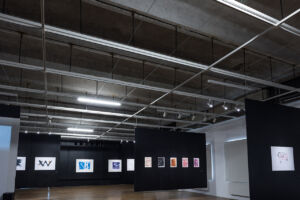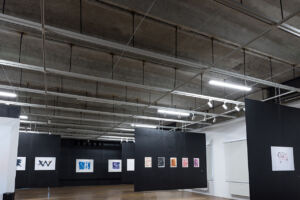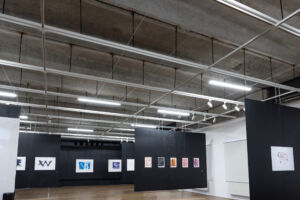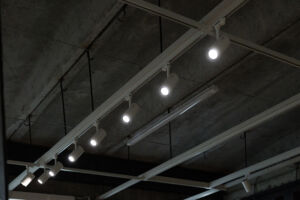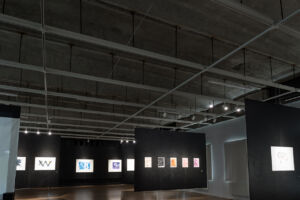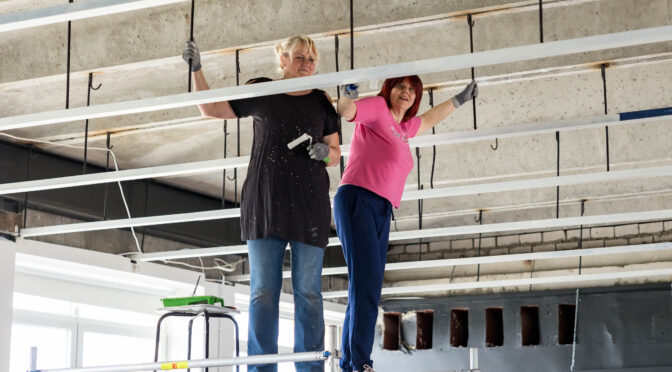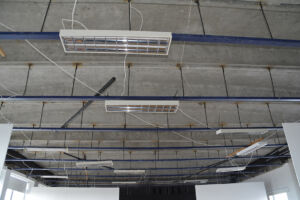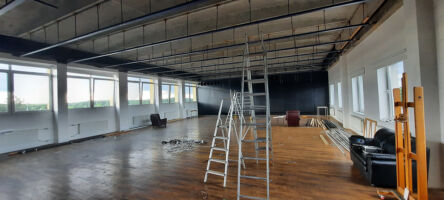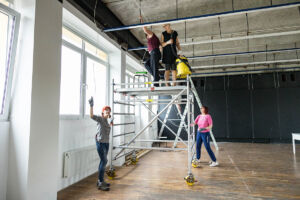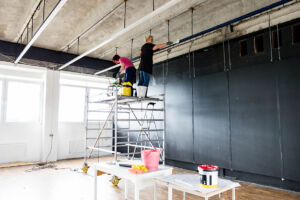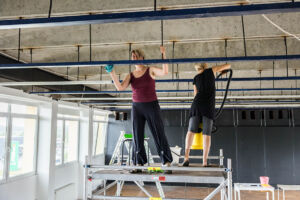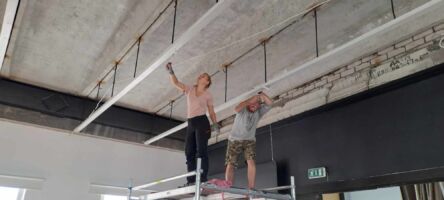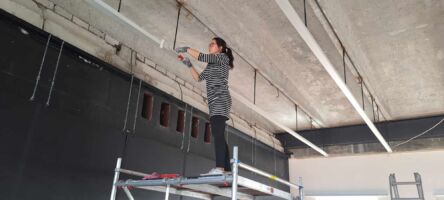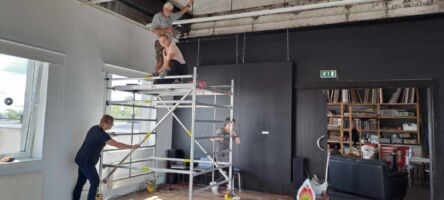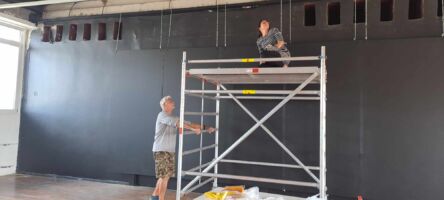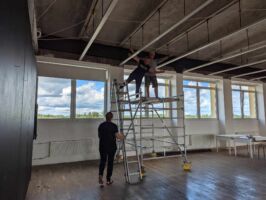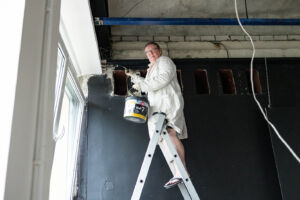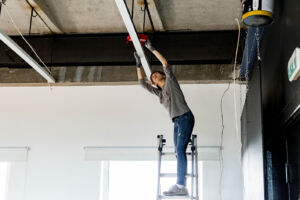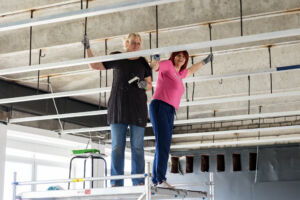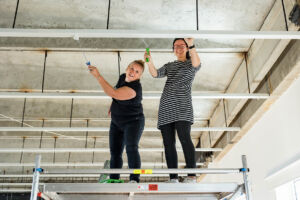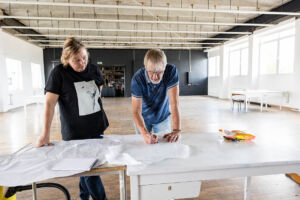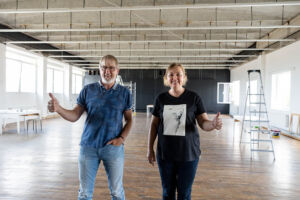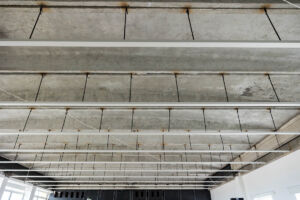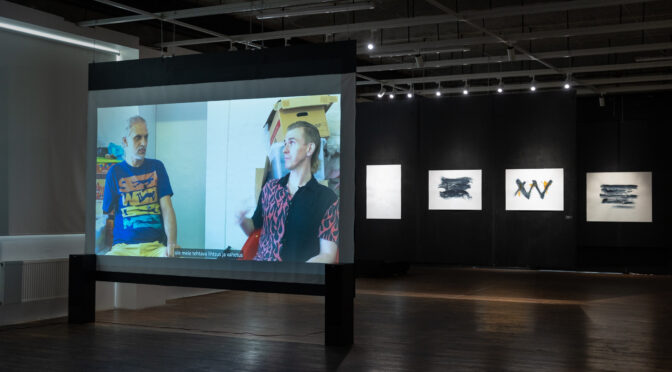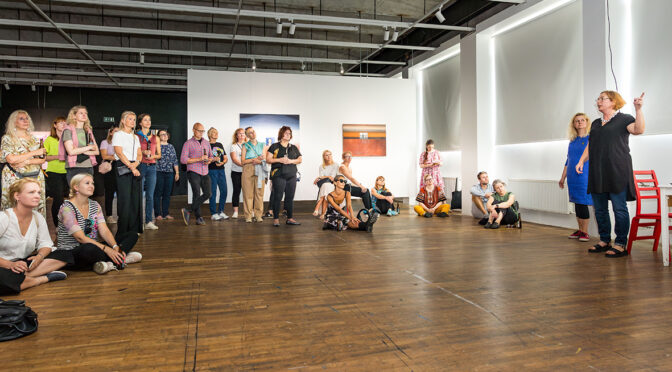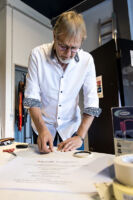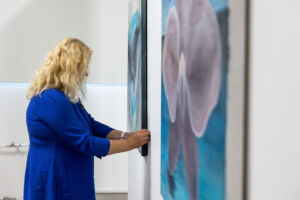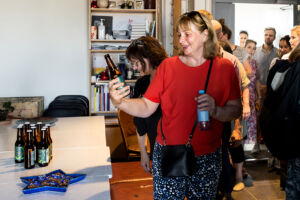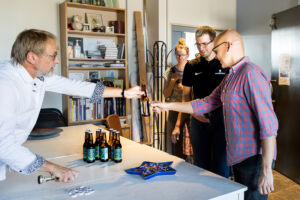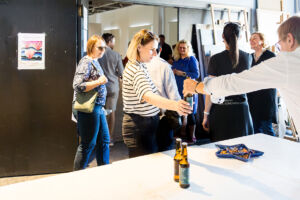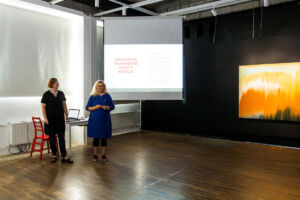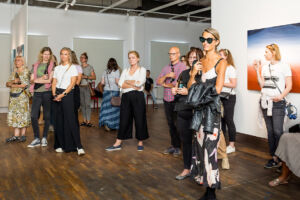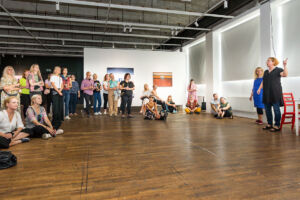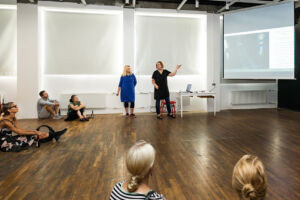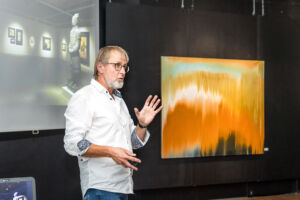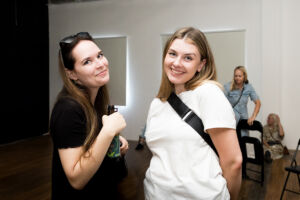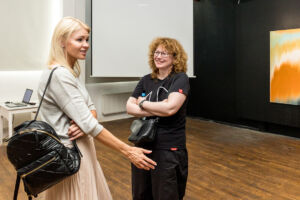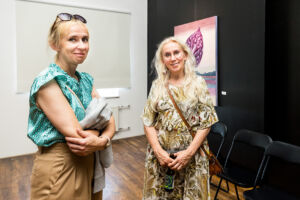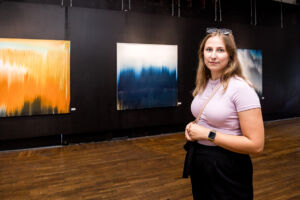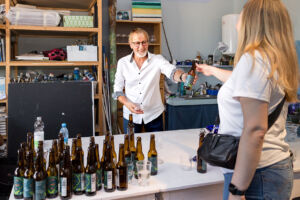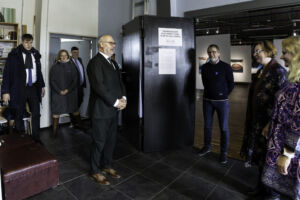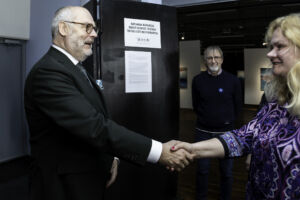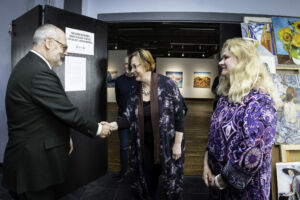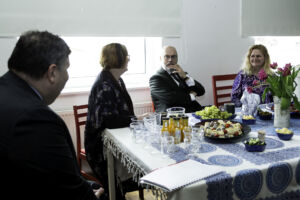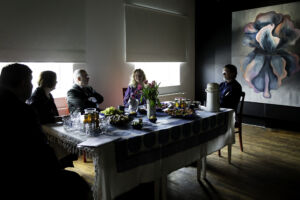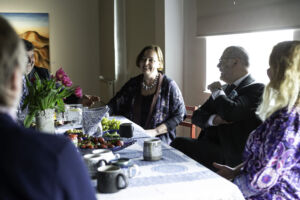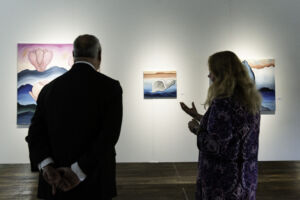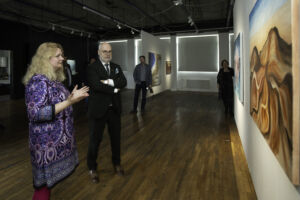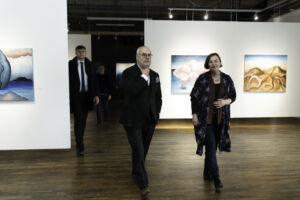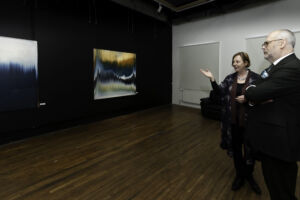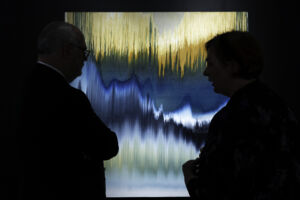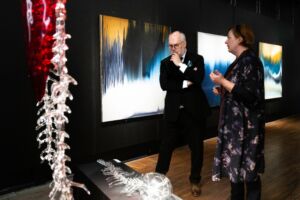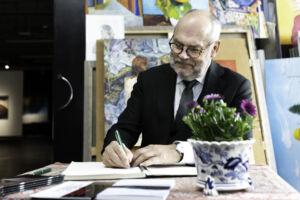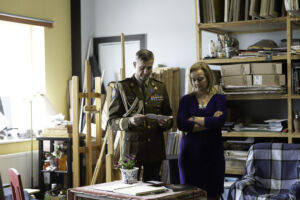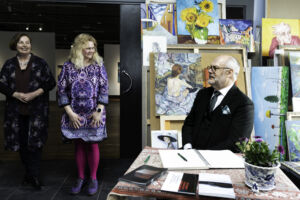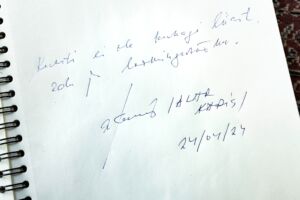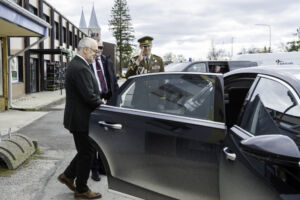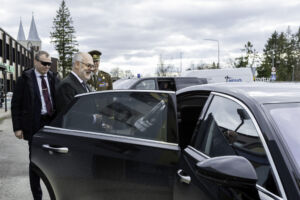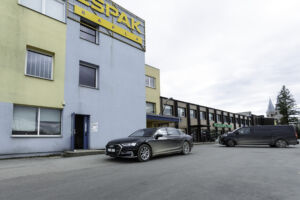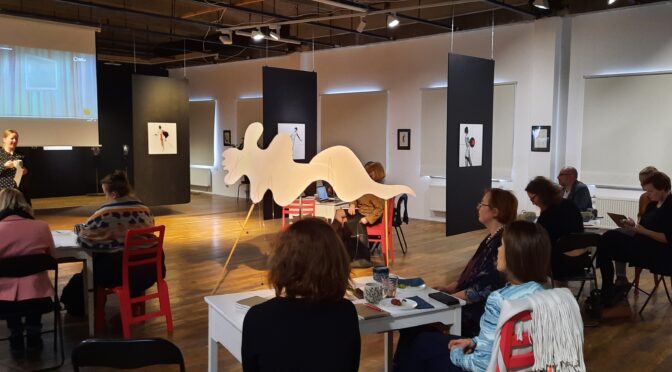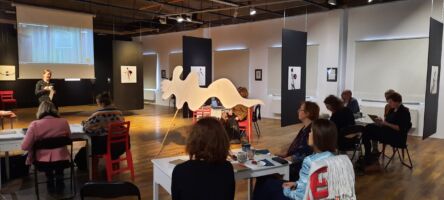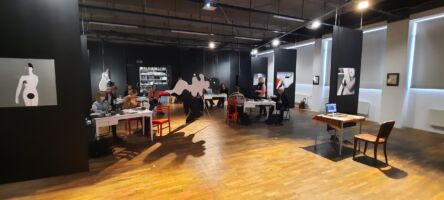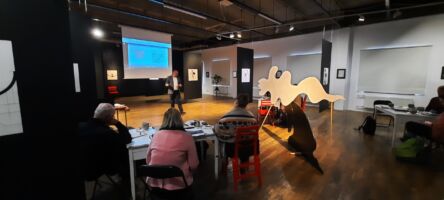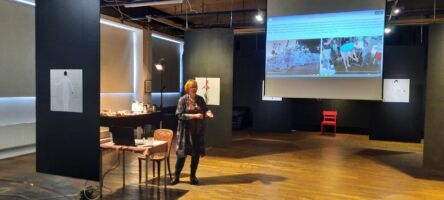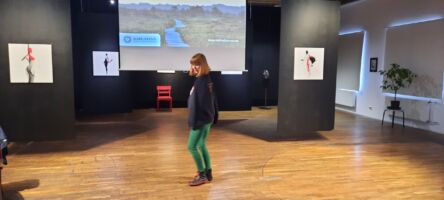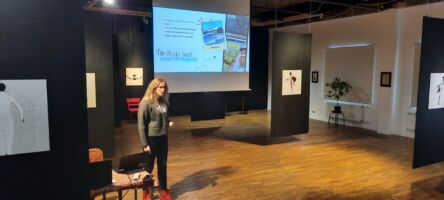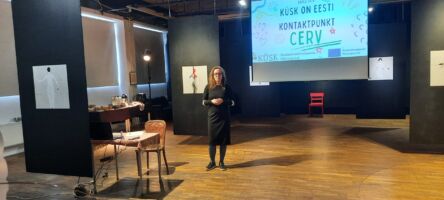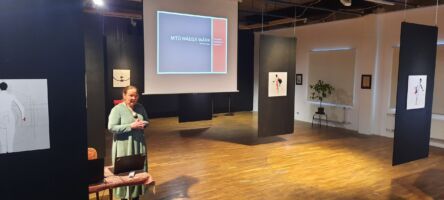The art of Phoenixes
You are all invited to the opening of the exhibition of the female artists’ group Phoenix
on Friday, 21.11.2025 at 18:00 at the Rapla Contemporary Art Center.
The opening exhibition “Phoenix 2” is the second appearance in the series of the new
artists’ association this year. The first joint event took place on 09.03-03.04.2025 at the
Pärnu City Gallery, where the group of female artists actually was born while testing
themselves with the mirror of exhibition.
This time we are celebrating the miracle of birth more consciously, and in a way fittingly for
the Phoenixes. In the course of preparing the exhibition, in addition to creating new works,
we also engaged in so-called introspection – it would be more appropriate to say, mapping
the Phoenixes’ positions on some of the most important topics female artists are generally
associated with.
Through 20-30 years of experience as an artist, we looked at the distribution of energy
between creation and family responsibilities, the reflection of gender and age, the sources of
ideas and inspiration, or where creative POWER comes from.
We solved the measurement of one’s own creation, based on the basic thesis of feminist
classics, according to which man = intellect/culture, woman = body/nature, in a more modern
form, reflecting on the connections between NATURE and CULTURE in creation.
Guests of the exhibition can compare and connect Phoenixes` the self-reflections formulated
as texts with the exhibited visual artworks.
The more than 200-square-meter space is filled with visual mystery. There is nothing
random in the room specially segregated for the event, but at the same time each
combination of the works seeks its own place through balance created.
This time the works are grouped by author, it makes the placement in the whole important.
The uniqueness of the artists and the diversity of techniques are what makes the exhibition
unique.
The following artists will be performing at the Rapla County Contemporary Art Center: Katrin
Valgemäe, Alide Zvorovski, Marina Aleksejeva, Anne Rudanovski, Katrin Saag, Maria
Kristiina Ulas, Ülle Saatmäe, Maris Siimer, Kalli Kalde, Kaire Nurk, Katrin Kaev, Lylian
Meister, Lembe Ruben, Tiiu Rebane and Eveli Varik.
The music for the exhibition “Magus magus” is by Rene Varik.
The exhibition will remain open until mid-December.
On the last day, Sunday, 14.12.2025, the exhibition will be closed within 13:00-15:00
with artist talks.
Next year, in 2026, the activities of the Phoenix will continue at the same pace, currently
preparing for performances in two galleries in Tallinn.
Category Archives: Events
Existences within Art
Maiu Albo, Mikk Allas, Moyo Eivas, Mauri Gross, Ain Jürisalu, Jaak Kadarik, Erki Kannus, Katrin Kirsipuu, Mai Klemmer, Eha Koit, Sirkka Lasner, Mathura, Maiu Mooses, Kairi Orgusaar, Riin Pallon, Urmas Puhkan, Erki Põld, Avo Päädam, Editha Salm, Ülla Sirendi, Eda Taevas, Ave Tislar, Eteri Tõlgo, Krista Urvet, Märt Vaidla, Siret Varimõis.
Graphic Design Kati Kerstna
Artist talk with Matti Vainio
Matti Tapio shares his thoughts at his solo exhibition on March 16 at 12.00!
Artist talk with Sofi Aršas
RCCCA awarded new title
 On Nov 26, 2024, the RCCCA was awarded the title of Cultural RIches Promoter of the Year by the municipality, for the project that saw the building of new lighting fixtures at the Centre.
On Nov 26, 2024, the RCCCA was awarded the title of Cultural RIches Promoter of the Year by the municipality, for the project that saw the building of new lighting fixtures at the Centre.
New lighting – Stage 2
In July- August 2024, we fixed the power cables and built a network of 3-phaselighting tracks.
The system was engineered by Meelis Tähepõld. Construction work was done by Agur Tähepõld and Meelis Tähepõld.
We extend our gratitude to our sponsors: Meelis Tähepõld, Erki Kannus, ERCO, Kumu Art Museum.
Photos: Tiina Kõrtsini
Installation of new lighting at the RCCCA
Our art centre has finally begun the installation of a new lighting system. On July 7th and 8th, our community came together to work on the ceiling.
The project was financed by the Civil Society Foundation, and mentored by Meelis Tähepõld. Project manager: Kairi Orgusaar.
Work done by: Maiu Albo, Merle Kannus, Erki Kannus, Kati Kerstna, Kairi Orgusaar, Riin Pallon, Avo Päädam, Editha Salm, Olga Sokk, Ave Tislar, Eteri Tõlgo, Siret Varimõis.
Photos by Tiina Kõrtsini, Ave Tislar, Meelis Tähepõld, Maiu Albo.
Kirikuju. Meeting the authors
A visit by the Ministry of Culture
President Karis visits the RCCCA
Riburadamisi – In Mother Tongue
On Mother Tongue Day, March 17th, 3pm, Ly Ehin and Valter Uusberg will discuss Estonian poetry and song at the RCCCA.
The discussion is followed by a concert, performed by Sten-Olle Moldau, Riinimanda Studio Youth Choir, August 07 mixed choir.
Conductors: Helen Allikvee, Ele Andok, Pärt and Urve Uusberg.
